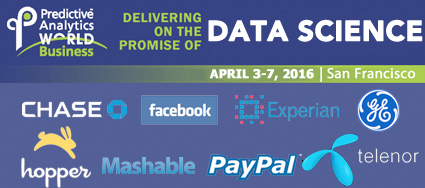When you hear the term “data scientist,” you probably think of finance or meteorology or maybe a sports-managing savant like Jonah Hill in Moneyball. But that’s all about to change. It’s no longer just baseball recruiting or even Wall Street that are wooing the analytical geniuses.
We’re seeing people who used to live in academia and consulting flooding into areas like marketing, business development, and product. The business world has become obsessed with making itself smarter.
And yet one of the hottest areas of business—hiring—has lagged behind. Until now, departments like marketing and finance were some of the first to embrace the data revolution, but as the market’s heated up and competition for the best talent is fierce, companies have started pouring funds—and people—into processing the massive amount of candidate data floating around on the web.
As competition for the best-and-the-brightest gets more aggressive, and flexibility for slow timelines shrinks, traditional recruiting methods fall flat. Hiring needs to get schooled, and the scientists are ready. The data science hiring revolution is ripe to begin.

USE CODE PATIMES16 for 15% off Predictive Analytics World Conference pass.
Why is hiring falling behind?
Fact: Recruiters still spend up to 80 percent of their time on low-level, manual tasks like sourcing and data entry. These people are experts at relationship-building and communication, but rarely practice those strategic functions because they’re too busy typing search terms into job sites and manually scheduling interviews each day.
Plus, with limited access to information about what’s working and what isn’t, hiring pros are at a huge disadvantage. They don’t know which candidates are worth their time, which tactics are effective, or even which channels are attracting the most likely candidates. That means they end up trying to figure out the best processes to use and vetting candidates, which only makes them fall even further behind.
As if forcing talent teams to work in a vacuum isn’t enough cause for concern, today’s endless, mind-numbing hiring process sets the company back. In fact, companies can lose 70 percent of prospective candidates because they’re simply too slow to hire, which clearly doesn’t help them stay ahead of their competitors.
No business can afford to keep wasting valuable talent acquisition resources (and cash), so savvy companies have started turning to science for help.
How data science is blowing up hiring-as-usual
Combining data science with hiring creates a tidal wave of change—and opportunity. With a smarter approach, human HR workers don’t need to waste time on the time-sucking tasks that now cram their workday. Instead of running searches by hand, for example, recruiters can use an algorithm to sort through millions of prospects and select exactly the right ones for each role.
A science-based approach optimizes the entire hiring process from job req creation and posting to scheduling interviews, collecting feedback, and managing follow-ups. More importantly, it also continually gathers valuable info that helps hiring folks make better strategic decisions—really fast. Data science can now predict when someone is ready to change jobs, and behavioral science and machine learning help the software get smarter the more it’s used. Analytics presented by new advanced technologies can show hiring teams where to focus their energy, which approaches have been most successful, and even how the talent landscape is shifting over time.
So who powers all this innovation? That’s where the data scientists come in.
Robert Carroll joined Gild in 2014 and serves as Senior Vice President of Marketing. He is responsible for crafting and executing Gild’s marketing strategy including brand, sales enablement, press and analyst relations, events, and demand generation programs. Robert leverages more than 20 years of strategic marketing experience at both start-ups and Fortune 500 companies in the software, media, cloud infrastructure, and software-as-a-service industries. In addition to holding executive positions at GoGrid, Clickability, AOL, Ziff-Davis (ZDNet), Ofoto (now Kodak), and Wind River, Robert was a founding team member of GNN, the world’s first commercial website. Robert is also a guest lecturer at the Haas School of Business, University of California-Berkeley, and a former multi-year board member of the Software and Information Industry Association (SIIA) Marketing Executive Council.